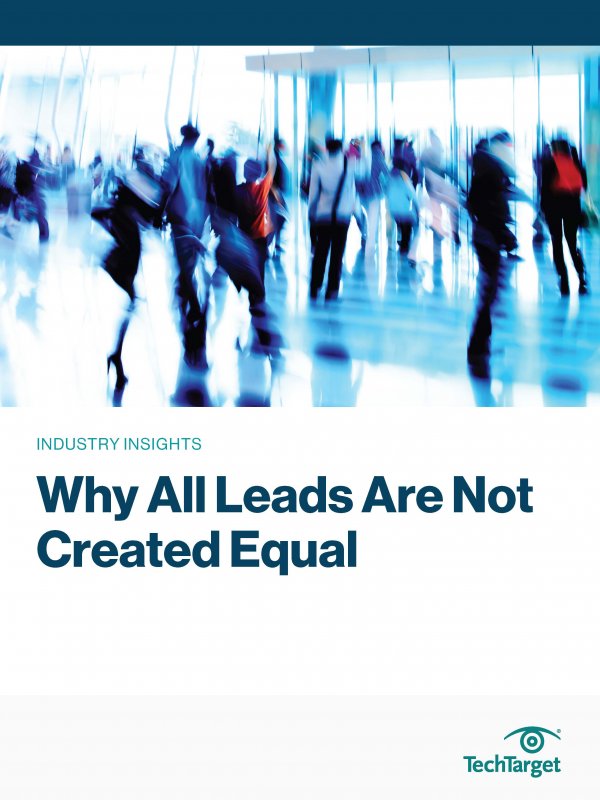 At a time when there is more customer data available than ever, the overarching trend in paid demand generation is toward standardization. With few exceptions, the B2B tech industry has come to define a marketing “lead” in very consistent terms, as an individual who: works for a business or government agency, serves in a business technology-related role, is interested in your product area and has directly opted in to receive your content and follow-up outreach.
At a time when there is more customer data available than ever, the overarching trend in paid demand generation is toward standardization. With few exceptions, the B2B tech industry has come to define a marketing “lead” in very consistent terms, as an individual who: works for a business or government agency, serves in a business technology-related role, is interested in your product area and has directly opted in to receive your content and follow-up outreach.
Additionally, the industry has also accepted as standard the data that should accompany a lead, and how that data is delivered:
- Demographic information: Name, title, role or function, contact information
- Firmographic information: Industry, company size
- Details about the content consumed
- Delivered in an extensible file format (such as Excel) or directly integrated into marketing automation systems
When the prevailing industry standard is to deliver basic contact information and data in a spreadsheet, how can marketers possibly assess quality with leads that essentially look alike?
The answer is less about what is in the spreadsheet and more about what’s not. It is essential insight on purchase intent. It is information about lead origin and activity history, topics of interest, quantity and recency of their research, and whether other influencers on their account team are also showing intent. Data points like these are key indicators of a lead’s disposition, receptiveness and readiness to convert. And though this kind of info isn’t as black and white as spreadsheet demographics, it’s completely knowable and quantifiable, and should be a core part of your evaluation of lead providers.
So why aren’t more lead providers delivering this insight? And why aren’t more marketers demanding it?
Challenging the standard: Generating real leads vs. generating contacts
According to a recent study from Ascend2, 54% of marketers claim that increasing the amount of leads is the most important objective of their lead generation strategy. To meet the demand for lower price and higher quantity, many vendors are driving commoditization as they veer away from activity and intent toward something much closer to contact delivery.
But contacts should not be mistaken for leads. Real leads have an activity context. Contacts do not. There are plenty of sources for contacts, and good applications for using them. But you won’t convert contacts at anywhere near the rate as leads. Contacts generated in mass volume dilute your pool of opportunity and despite low CPLs, the costs of trying to convert unqualified and uninterested contacts into sales opportunities ultimately drives your demand generation investment higher.
When you look at demand gen through the lens of quality vs. quantity, it’s clear there are a lot fewer “real” leads available than you may have thought. Marketers who are connected to pipeline can not afford to accept a compiled list of contacts masquerading as qualified prospects.
All leads are not created equal – choosing the right lead provider

Every lead provider will provide you with the same basic information, but that is where the similarities end. You need to ask your lead providers the right questions up front and demand the insight you need to better assess quality. Furthermore, you must look for lead providers that are invested in driving not just names in a spreadsheet but pre-qualified prospects that have the best-possible chance to convert to pipeline.
At TechTarget, leads come from accounts exhibiting true purchase intent. When you enlist TechTarget for lead generation, you get more than a set of defined data points in a standardized spreadsheet. Along with each lead, you receive insights into the relevant research activity from both the lead and his or her extended buying team to help you find and close the right opportunities faster.
Download the white paper Why All Leads Are Not Created Equal to learn more about quality-focused demand generation through purchase intent insight and 3 key questions you must ask lead providers before you buy.




